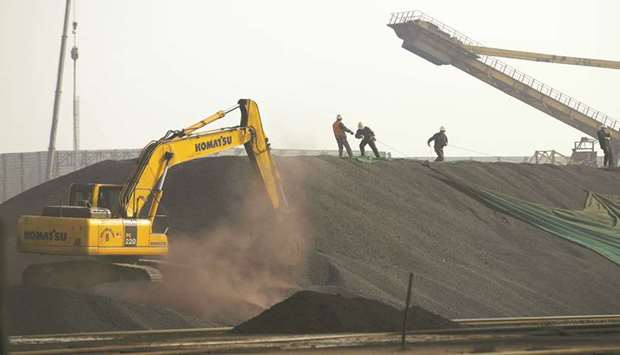For the best part of a decade, commodities have been deeply out of fashion. Now, as investors scour the market for the great reflation play, they’re hot again.
Investing luminaries from Point72 to Pimco are calling for commodity prices to move higher. Goldman Sachs Group Inc, the bellwether of Wall Street, is predicting a new commodity bull market to rival the China-driven boom of the 2000s and the oil price spikes of the 1970s.
“We very much believe that the fundamentals are now in place for a new, structural, bull market to begin,” said Robert Howell, senior research strategist at Gresham Investment Management LLC, the commodities-focused unit of Nuveen with $5.8bn in assets in the sector. “In the years to come, it’s highly probable that a great many investors will look back on 2020 and wonder how they missed these signs of a new commodity bull market.”
Prices have already jumped from their low point in the spring. Copper, iron ore and soybeans have risen to their highest levels in more than six years, spurred by a Chinese buying spree.
But now Chinese importers are being joined by global macro investors, drawn to commodities as a bet on the recovery of the global economy as well as a hedge against the prospect of high inflation.
Commodities are stereotypical cyclical assets, rising and falling in synchrony with the global economy. That puts them first in line to benefit from the recovery that could be unleashed by virus vaccines.
“We are optimistic on commodities overall, as recovering global economic growth and the possibility of higher inflation should be supportive for prices,” says Evy Hambro, who helps manage $16bn as global head of thematic and sector investing at BlackRock Inc.
Nic Johnson, who manages about $20bn of commodity index investments as well as a separate hedge fund at Pimco, believes commodities “will benefit from the global reflationary theme.”
The enthusiasm marks a turnaround for an asset class that has been unloved for years. While investors piled in to commodities as prices soared in the decade to 2011, since then they have soured on the sector. Many of the highest profile hedge funds specialising in commodities exited the markets – including Astenbeck Capital Management, Blenheim Capital Management, and Clive Capital, each of which managed billions of dollars at its peak.
But now that trend is beginning to reverse. The hedge fund industry as a whole has seen outflows this year, but hedge funds focused on commodities have managed to raise money. They pulled in more than $4bn in flows through October this year compared to about $55bn in outflows from the industry overall, according to data from eVestment.
Fund managers also see growing interest. Don Casturo, who founded Quantix Commodities in 2018 as a boutique focused on the sector after working as chief operating officer for commodities at Goldman Sachs, says he started out calling around asset managers he already knew had an interest in the asset class.
“Now we’re responding to incoming calls – people who’ve decided that commodities are interesting are finding us,” he says. “The environment that was creating such a bullish tailwind for equities and fixed income is coming to an end, and people are looking for alternatives.”
Quantix’s long-short commodity fund, which started with $50mn in 2019, now has $620mn under management and has returned just over 15% so far this year, he says. The firm is launching a long-only “inflation index” in February.
Others have also notched up a strong performance: oil trader Pierre Andurand’s Discretionary Enhanced Fund was up 152.2% in the year to December 11, according to a person familiar with the matter.
Of course, not everyone is unambiguously bullish.
For one, prices have already rallied a long way. Johnson of Pimco says he is “most positive” about US natural gas, but doesn’t expect agriculture prices to move higher unless there is a significant decline in crops in the Southern Hemisphere.
Analysts at JPMorgan Chase & Co warned last week that the Chinese credit cycle has already peaked, and forecast lower base metals prices over the course of 2021. And while some are fearful of rising inflation, others see little cause for concern, arguing that global economic activity will remain below capacity for years.
The commodity bulls, however, have other arguments in their armoury. Casturo of Quantix argues that the rotation back into commodities is still in its infancy, pointing to some $130bn of passive investor money that has left the sector over the past few years.
Many expect stimulus packages targeting the electrification of transport and the growth of renewable energy to boost demand for metals.
And across the commodities industry, supply may be constrained after several years of low prices have forced producers to curb spending. Nowhere is that truer than in the oil industry, where the combination of the collapse in prices to below zero in April and investor pressure has led the top companies to slash spending.

Labourers work on a pile of iron ore at a steel factory in Tangshan, China. Iron ore and copper have risen to their highest levels in more than six years, spurred by a Chinese buying spree.


